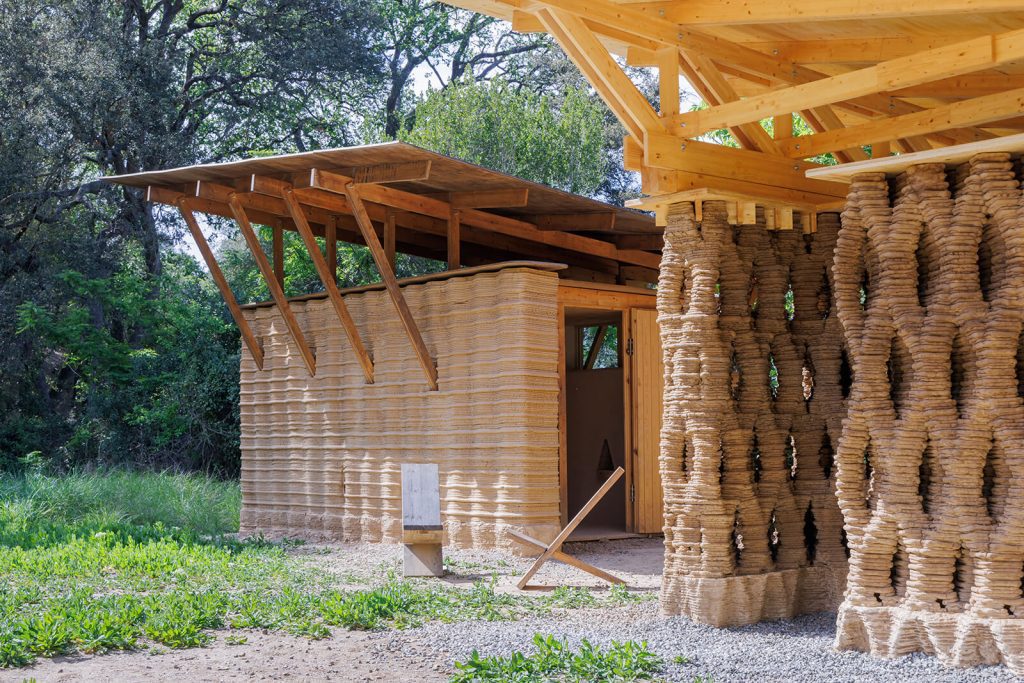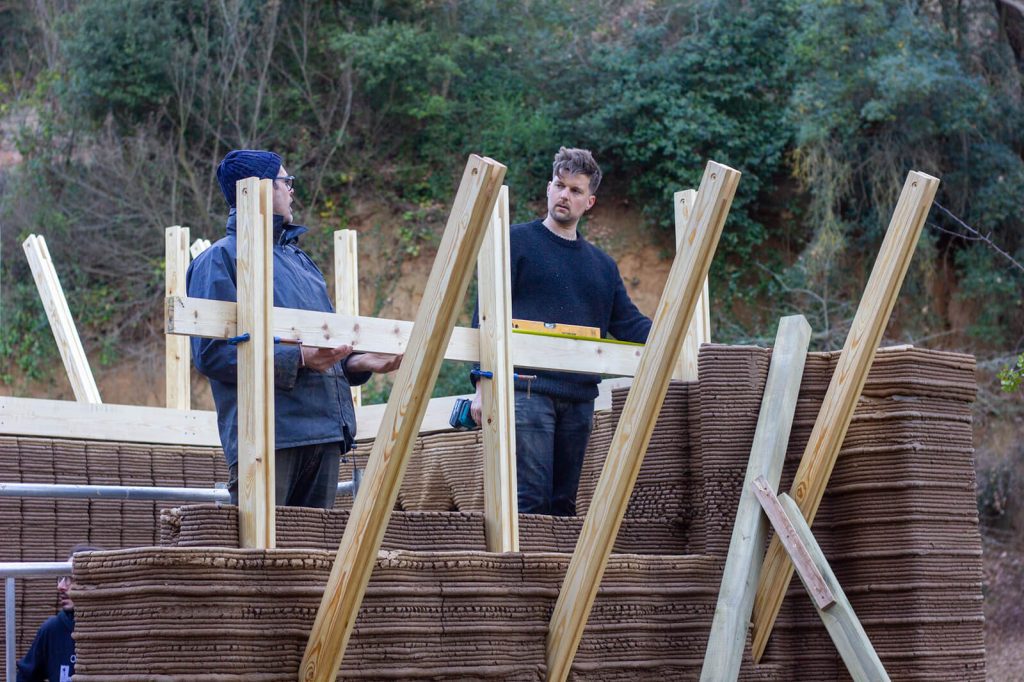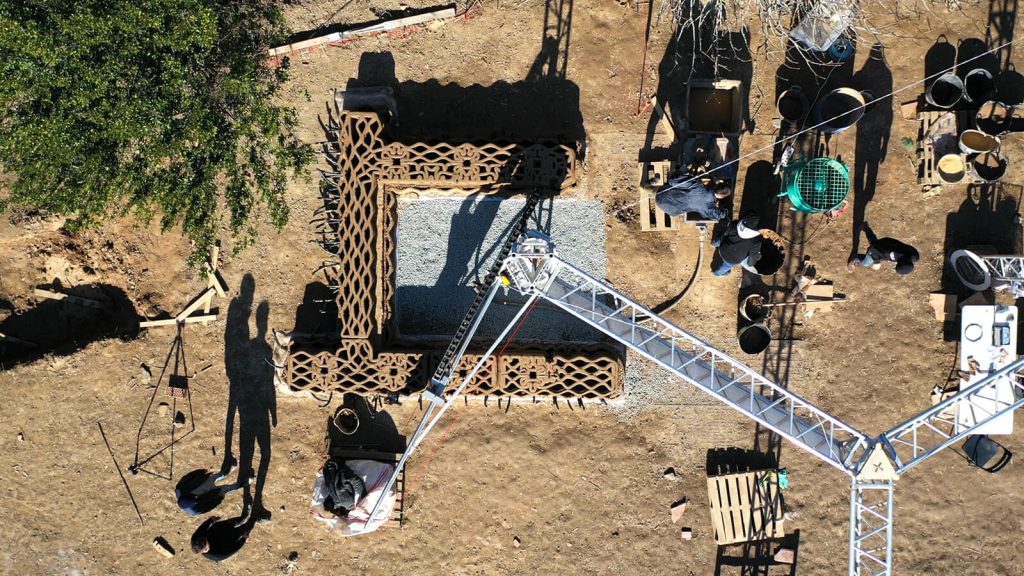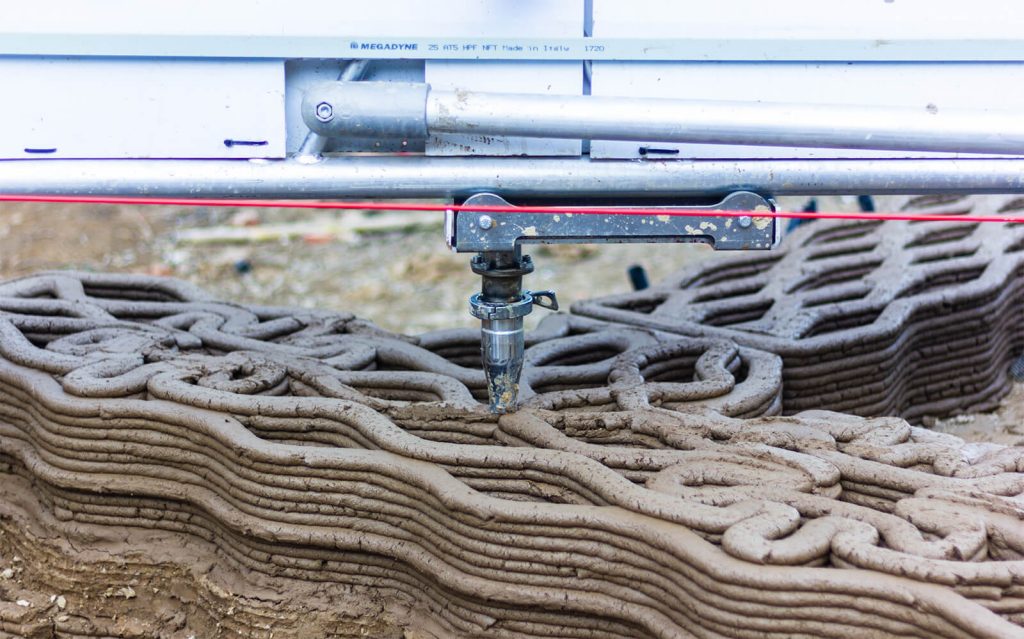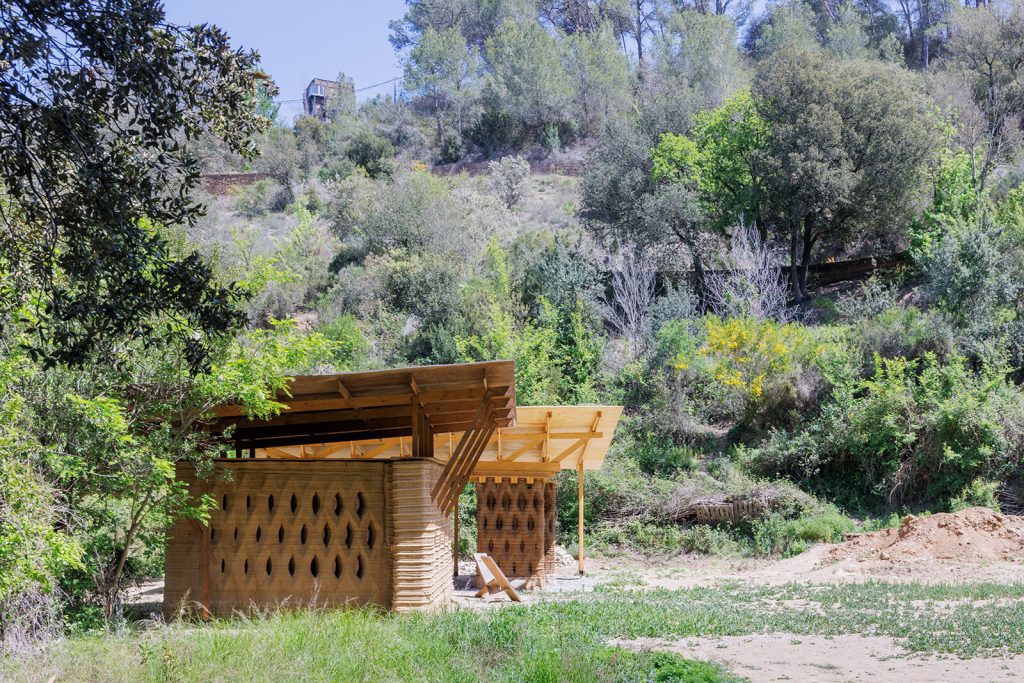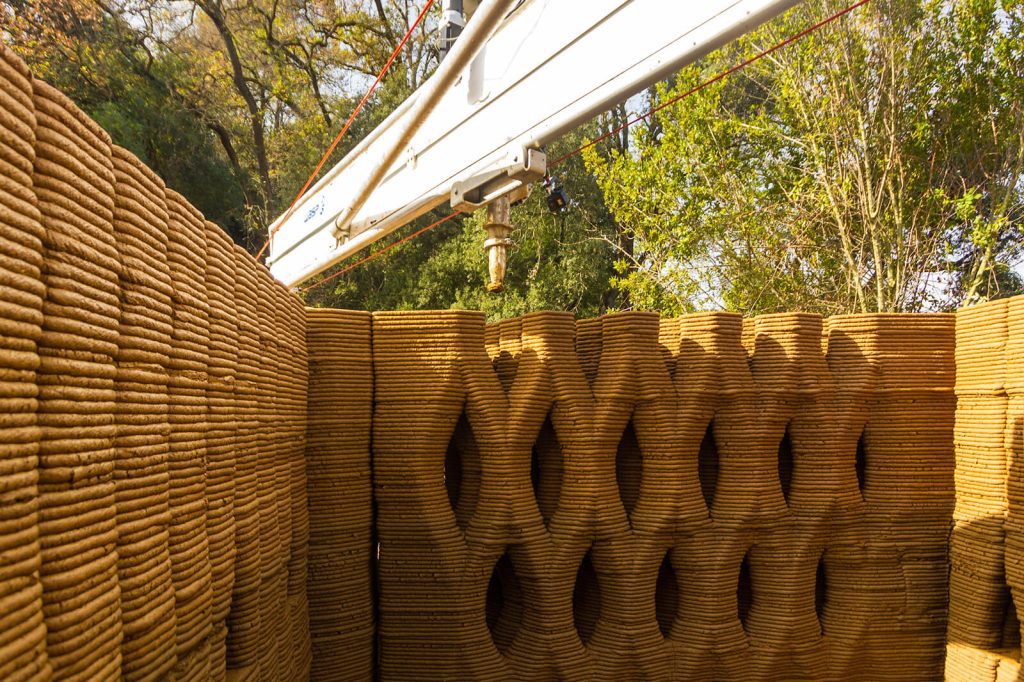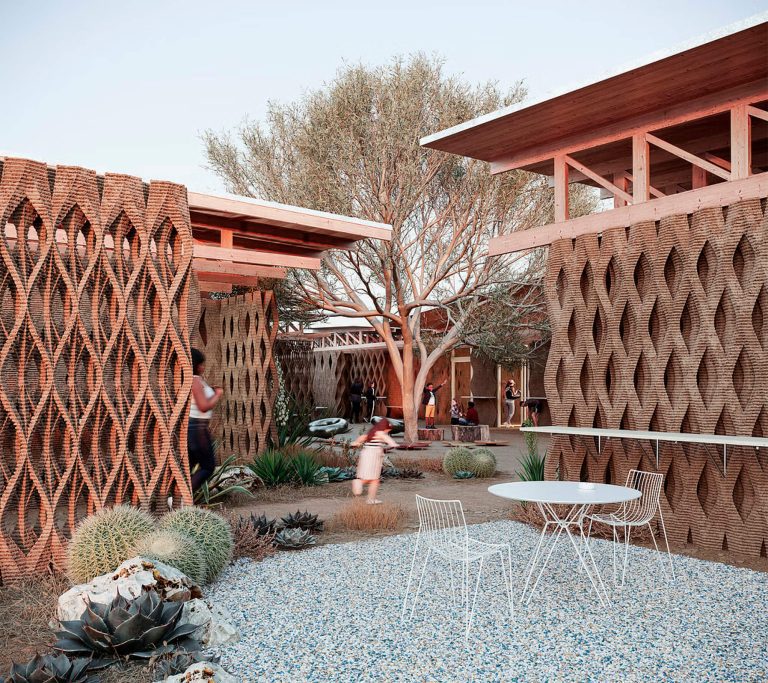A new construction technology has emerged that uses 3D printers instead of traditional building methods to create structures from the ground up. The Institute for Advanced Architecture of Catalonia (IAAC) has showcased this innovation with its first project, the 3D Printed Earth Forest Campus, located in the Collserola Natural Park near Barcelona. This 100-square-metre prototype serves as a versatile and sustainable housing solution that can be built quickly using locally sourced materials. This project was made possible through a collaboration with the global architecture firm Hassell.
At the heart of the technology is using a Crane WASP 3D printer to layer local soil into durable, adaptable structures. The building process involves excavating soil from the site, mixing it with water, organic fibres and natural enzymes, and then printing the walls at a controlled rate to prevent collapse. This method ensures that the walls are strong and well-insulated, providing excellent protection against various weather conditions.
Environmentally, the project has near-zero emissions due to its reliance on local materials, significantly reducing waste and the carbon footprint typically associated with construction. The design also incorporates a natural stone foundation and a stabilised earth base to protect against water damage, ensuring longevity and sustainability.
The 3D Printed Earth Forest Campus is more than a prototype; it’s a demonstration of how advanced 3D printing can revolutionise construction practices by offering low-cost, environmentally friendly housing options. This technology addresses the urgent need for affordable housing and promotes ecological harmony by using minimal resources and producing minimal waste.
